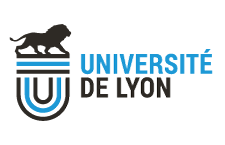Unités de recherche
Partenaire 12: CEA-LETI
Physique
- Adresse :
- DTBS/STD/LISA
CEA-Leti
MINATEC Campus, 17 rue des Martyrs
38054 Grenoble cedex 9 - Sur Internet :
- www.leti.fr
- Tutelle :
- CEA
Organisation
Représentant: Olivier PEYRET
DETector Laboratory (LDET) (Project Leader: Loïck VERGER). LETI/DTBS has a long experience in research and developments of X-ray and gamma-ray imaging detectors. To develop new imaging solutions, we associate skills in physics, modelling and simulation, electronics and information processing, with innovative technologies from others LETI Departments (ASIC design, innovative packaging, new material …). Today, we have a world recognized expertise in X-ray and gamma-ray imaging detectors for medical, security, and scientific applications based on semiconductor detection material. LDET laboratory is working on innovative photon counting and spectrometric X-ray detector architecture. We have demonstrated, over the recent past years, the feasibility of a complete X-ray spectrometric chain with high energy resolution at high photon flux, with real-time processing thanks to the combination of optimized detector geometries and dedicated electronic readouts. We have an ongoing development based on this new detector for airport luggage control applications. Spectral CT detector for medical and security applications is part of our roadmap.
LDET laboratory is composed of 26 permanent people, mainly involved in R&D projects with industrial partners, via bilateral contracts and cooperative collaborations (ARN, FUI, FP7 …). It has been working successively with partners involved in this proposal, in particular CREATIS in X-ray reconstruction algorithms and X-ray simulation.
Imaging and Readout System Laboratory (LISA) (Project Leader: Jean-Marc DINTEN). Since 2003, the LETI/DTBS has been developing instrumentation for fluorescence in vivo imaging. Initially focused on applications for small animals imaging, the research has resulted in the development of a fluorescence reflection imaging (FRI) system. The miniaturization of this FRI system and its integration into a portable imaging probe (intraoperative imaging probe) has been carried out. The technologies of these intraoperative probes have been transferred in 2009 to the start-up Fluoptics. In 2006, a 3D-transmission fluorescence diffuse optical tomography (fDOT) system was developed. It allows high sensitivity reconstruction of in vivo distribution of fluorescent vectors in mice. Several prototypes of this system are currently used by different biological labs for small animal studies and its industrial development is currently in progress. Since 2007, new efficient approaches for deep tissues inspection, based on time resolved fluorescence imaging, have been developed. This approach has been more precisely investigated for prostate cancer diagnosis through the ANR/ PROSTAFLUO project. The goal of this program is to develop a new bimodal imaging system coupling fluorescence imaging to a transrectal ultrasound probe.
In vivo LISA laboratory activity is composed of 9 permanent people, mainly involved in R&D projects with industrial partners, via bilateral contracts and cooperative collaborations (ARN, FUI, FP7 …). It has been working successively with CREATIS (involved in this proposal) on bi-modal imaging: US and fluorescence optical tomography.
Axe(s) de recherche
CEA-LETI (an Institute of Commissariat à l’Energie Atomique et aux Energies Alternatives or CEA), located in Grenoble, with more than 1400 employees is a major research centre for Microelectronics, Microtechnologies, Optronics and Instrumentation in Europe.
A dedicated division, LETI/DTBS (Micro-technologies for Biology and Healthcare Division, 190 people including 32 PhD and post-docs) develops applications of micro-nano technologies in the field of health. The challenge for the LETI/DTBS is to create devices and systems highly miniaturized and incorporating intelligence in order to improve performance and reduce costs. Numerous actions imply a partnership with LETI technological departments thereby evaluating the new technologies developed by these departments on an application level.



 Accueil
Accueil PRES LYON
PRES LYON Nous contacter
Nous contacter Archives
Archives WebAdmin
WebAdmin